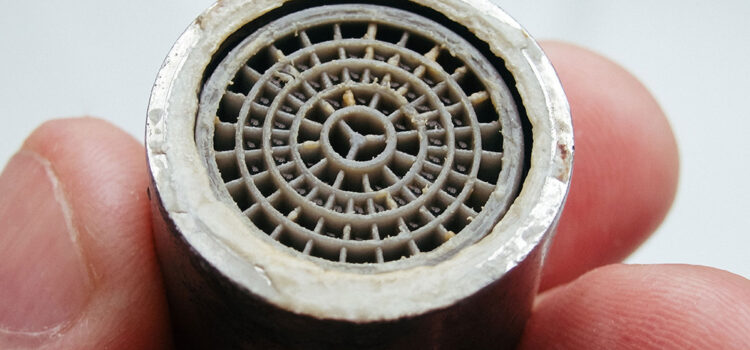At TX Water Treatment, we help Texans tackle tough water—because around here, hard water is more than just a nuisance. It can clog pipes, shorten the life of appliances, leave mineral stains on faucets, and even make your skin and hair feel dry. A properly maintained water softener is the best way to protect your home and your comfort.
Through our locally trusted teams—San Antonio Water Solutions, Austin Water Solutions, and Houston Water Solutions—we bring expert, personalized service to households across Texas. This guide breaks down the key parts of a water softener, tips for maintenance, how long your system should last, and when it’s time to replace components. If you’re curious about how the full process works, start by checking out our softening system overview.
Key Components of a Water Softener
- Resin Tank: Holds ion-exchange beads that trap hardness minerals.
- Brine Tank: Stores salt solution used to recharge resin.
- Control Valve: Directs water flow and starts regeneration cycles.
Per the WQA Smart Softener Guidelines, modern systems often use demand-initiated regeneration based on water usage—this conserves salt and water.
Maintenance Tips to Keep Your System in Top Shape
- Check salt monthly: Maintain at least half-full brine tank with high-purity salt.
- Clean the brine tank annually: Remove sediment and salt crusting.
- Monitor the resin: Expect replacement every 10–15 years or sooner in harsh water.
- Track system performance: Be alerted by scale, dry skin, or laundry residue.
This aligns with the Department of Energy’s maintenance advice—it maintains efficiency and reduces appliance wear.
When Is It Time to Replace a Part?
- Control valve issues: Irregular regeneration or flow loss.
- Worn resin: Hard water returns despite proper salt levels.
- Brine system failure: Salt bridging, float malfunctions, or clogging.
Water Softener Lifespan Overview
Most water softeners in Texas have a lifespan of 10 to 15 years when properly maintained. However, the actual longevity of your system depends on factors like water quality, usage levels, and how consistently you maintain key components. Over time, resin beads can lose their effectiveness, control valves may become less responsive, and brine tanks can accumulate salt buildup. If your softener is regenerating too frequently, using excessive salt, or no longer delivering soft water, it may be time to replace aging parts—or consider upgrading the system entirely.
TX Water Treatment offers top-of-the-line service on existing units. When it’s time for a replacement, we carry durable, high-efficiency water softener systems built for the demands of Texas water. Whether you’re dealing with extremely hard groundwater or simply want a more reliable setup, our team is here to help keep your system running smoothly for years to come.
FAQs: Water Softener Parts & Maintenance
How often should I clean the brine tank?
Annually is generally sufficient unless you see salt bridging or sediment.
Can I replace a control valve myself?
Technically yes, but these parts often need calibration and plumbing adjustments. Professional installation avoids errors and maintains warranties.
How can I prevent salt bridging?
Salt bridging happens when hardened salt forms a crust inside the brine tank, preventing proper regeneration. To avoid this, use high-purity salt pellets, keep the tank no more than two-thirds full, and stir the salt occasionally to break up any solid layers. According to the EPA’s Home Maintenance Guide, simple preventative habits like these can help maintain softener performance and reduce the risk of operational issues over time.
How do I know my softener isn’t working?
Ring scale on faucets, diminished soap lather, spots on dishes, dry and brittle hair, or decreased water flow suggest time for inspection.
Why Annual Professional Checks Matter
Even if your water softener appears to be working fine, an annual professional inspection can make a significant difference in performance and longevity. Certified technicians have the tools and experience to catch issues that often go unnoticed—like valve miscalibrations, slow resin degradation, or unnoticed salt bridging. During a routine service, a technician will inspect critical parts, test your water hardness levels, fine-tune regeneration settings, and evaluate whether any components are nearing the end of their useful life.
These visits aren’t just about preventing failure—they’re about optimizing your system to match your home’s unique water chemistry and usage patterns. Water quality can vary greatly across Texas, and even neighboring households can have different mineral content or pressure levels depending on their source. That’s why a one-size-fits-all approach doesn’t work. With help from TX Water Treatment, you get tailored guidance based on deep knowledge of Texas water conditions—ensuring your softener runs efficiently and continues to deliver high-quality water year after year.
Protect Your Investment with Smart Water Softener Care
Your water softener works hard every day to protect your home from the effects of hard water—but it needs consistent care to keep performing at its best. By understanding how your system works, staying on top of maintenance, and replacing worn parts when needed, you can extend its lifespan and enjoy the full benefits of soft, efficient water. Whether you’re maintaining an existing unit or considering an upgrade, TX Water Treatment is here to help with local expertise, trusted service, and solutions tailored to Texas water conditions.
Ready to take action?
Get a personalized evaluation of your water softener—designed for Central Texas hard water and household demands.
